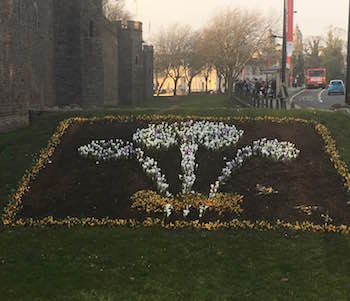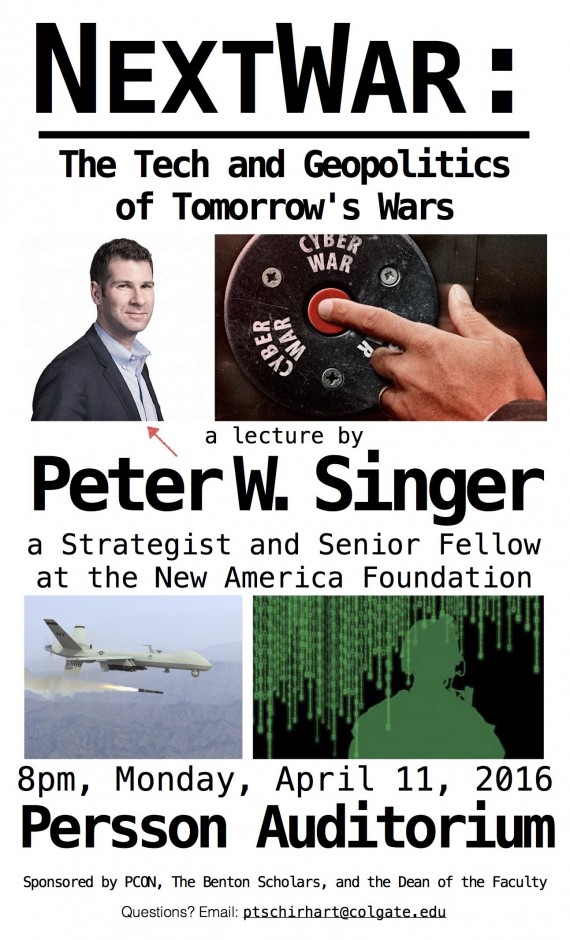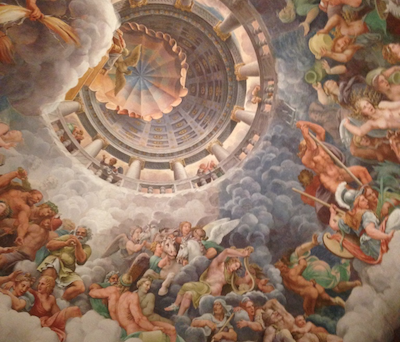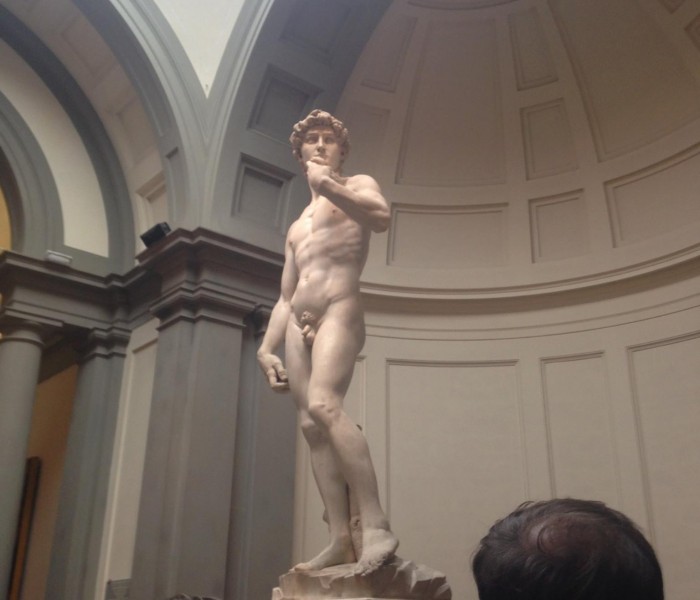
Week 6 Prompt: Art
What is art? Must it be beautiful? Does it require basic geometrical considerations, like symmetry and proportion? Does art, by definition, require skill to produce — or can art be made by chance? Can ordinary objects — like a chair or a urinal — be considered art? Can art be virtual: a video game? The answer to each of these questions is likely to be “yes,” depending on whom you ask. Indeed, to the extent “art” exists as a discrete and definable idea, perhaps the most we can say is that it refers to a thing or practice that gives meaning to our lives — or even, as in conceptual art, an idea that challenges us to engage more thoughtfully with the world surrounding us. But there are also times when non-Art is defined explicitly, usually when it doesn’t conform to rigid, ideologically-defined aesthetic standards. In recent years, critics have questioned the value of art that explores controversial subjects, makes use of bodily fluids, depicts the erotic, or that puts dead bodies on display. Which is to say: the cultural and conceptual contours defining art are by no means universal. This week, give some thought to art and how it’s defined in the society surrounding you. Are people open minded about art, or do they stick to the Old Masters? Is artwork publicly accessible? Are there any art museums nearby? Can art be found in public places, like parks? Is there any “functional” art, or even “propaganda” art? Take a picture of an art museum or a work of public art, then talk about art culture as you’ve observed it so far.
Ryan Hildebrandt
Art in Japan is everywhere. From small museums you can find down side streets, to the sprawling public parks, to just about every temple and shrine you can find (and there are a lot of them, trust me), art pervades every aspect of Japanese life and living in Japan. In addition to paintings and sculptures that adorn the walls of shrines and stand in many parks, perhaps the most immersive form of art you can find in Japan is landscape and garden art. Especially in cities like Kyoto, houses on city streets often featured a composed and meticulously composed garden towards the back of the house. Gardens are also prominent in the Imperial Palace, where a large portion of the complex is devoted to mossy gardens with towering pine, maple, and cherry trees. Most of these gardens are designed to be walked through or observed from a deck or bench, and different perspectives on the garden give entirely different experiences for the same space. Other common elements are stone lanterns and bridges, ground-covering moss, ponds with stepping stones, fountains, and sculptures often seated on the surface of the water. For some residential gardens, small tea houses or pavilions are common, often placed in the garden for an ideal view. This picture is from a temple and garden complex in Kobe, Sourakuen.

Mallory Keller
As an art history major, Florence was a dream. There is so much culture crammed into the city and it truly was the heart of the Italian Renaissance, which is centered around the ‘Old Masters’ of art. Three of the four classes I took were centered around art history and architecture and almost every one of my classes entailed a site visit to a museum or church where there were works of art. There is modern art in Italy, but I only went to one modern art museum in Italy, the Peggy Guggenheim museum in Venice. The focus is greater on the Old Masters of art, like da Vinci, Michelangelo, Titian, Raphael, Bellini, Bronzino, Vasari, etc. It makes sense since so many of them have ties to Florence, through the schools they attended or it was the home of their patrons (ex. the Medici family that built Florence), they are ingrained into the culture of the city. But beyond that, it is about the money these works of art bring to the city. Tourists come to Florence to see the great works of art. There are art museums all over and most of them charge admission (on the first Sunday of the month state museums are free, but then you have to fight insane crowds). In every store you can buy almost anything with a reference to a famous work of art. I saw the Mona Lisa on so many things all over the place and it is not even in Italy!
I learned to deal with the commodification of Old Masters work because i was able to see incredible works of art. While you did have to pay to get into museums, the Uffizi is only 8 euros, which is not much considering how many works of art are in there. I went five times and was even able to go to Vasari’s Corridor with my school, which is an incredible collection of artist’s self portraits that is closed to the general public. There are so many free walking tours available online to see awesome works of art that are scattered throughout the city. Many churches are free or accept a small donation and have incredible works of art inside, like the Santa Maria Gloriosa dei Frari church in Venice. For 3 euros, you can see incredible altarpieces by Titian and Bellini along with other amazing works of art. While I do appreciate modern art, it is incredible to me that artists were able to create these works of art with such skill 500 years ago. I had so much more to say about this post, but decided to keep it relatively short. But if anyone wants to reach out, I am always willing to talk about art.
Danielle Norgren
Often, art is defined as an act of creation. Thus, a work’s value becomes intrinsically linked to its complexity. I myself used to have this perspective, which lends a sort of cynicism towards certain works of modern art. Walking through contemporary art museums I often hear scoffs of, “I could have done this myself.” After spending time exploring art history in France, however, my perspective has greatly changed. My respect for non-conventional works of art has grown immensely.

http://staff.washington.edu/schenold/engl282/images/fountain.jpg
I think the most striking challenge to arguably conventional perceptions of art come in the form of “readymades,” a movement perfected by Marcel Duchamp. Readymades consist of relatively mundane unaltered subjects, i.e. a bottle rack. Duchamp’s most infamous work is “Fountain,” a urinal signed R.L. Mutt. I was able to view a replica of this piece in Nice. This work finds its fame not necessarily in its construction, but perhaps in its backstory. Duchamp tried to submit his work to the Society of Independent Artists, a society which was bound by its constitution to accept all members’ submissions. However, they took acceptation to Duchamp’s work, deeming it “a piece of sanitary ware – and one associated with bodily waste – [which] could not be considered a work of art and furthermore was indecent (presumably, although this was not said, if displayed to women).” Duchamp resigned in protest, frustrated by the board’s attempts to censor an artist. Duchamp was attempting to test the limits of new conceptions of art. Perhaps if he had used his own name to sign the work, the response would have been different as he was a respected and acknowledged artist.
With readymades, it can be argued that there has been no act of creation. As such, they cannot be labeled as art. For me, however, readymade art is particularly poignant. Readymades take every day objects and allow the viewer the chance to view them in a different light. I view art as any work that offers a change in perspective. To force oneself to view an object, a scene, an event, through the eyes of the artist.
Allison Zengilowski
Over Easter weekend, a few friends and I decided to trek to Melbourne (pronounced Melbin) to explore the area. This is a much more populous area than Wollongong, and we ended up staying in a hostel rather close to the National Gallery of Victoria, the Australian Centre of the Moving Image, and several other public art venues. Although the collections housed in the galleries were beautiful, I was most drawn to the art lining the buildings on Hosier Lane. This street has been deemed as a space where street artists can go to display and practice their art. The works ranged from full murals to small phrases, yet it was very easy to see the signature traits of various artists.
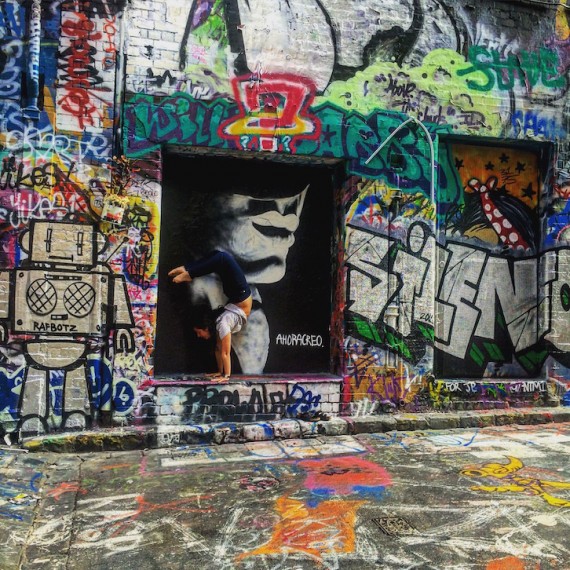
While we were meandering through the street, there were three artists working. Seeing the people behind the images while also noting how layered the walls were was a rather memorable experience. The street is constantly changing due to different artists coming in and leaving their mark. Therefore, Hosier Lane will almost certainly never look the same as it did when we were observing it.
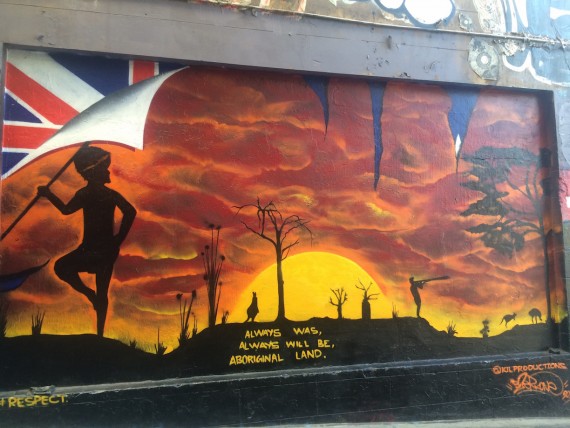
Personally, I appreciated how alive the art was. There were no restrictions or limitations to what one could place on the wall, and although most artists use the same materials, their techniques and signatures vary. We were not guided on where to look, rather, it felt like a little scavenger hunt trying to find all of the different images, texts, and tactile pieces interwoven throughout the brick walls.

As of now, I have noted that Australia does have an appreciation for art and has exquisite collections in galleries. However, what I find to be the strongest installations are those that exist outside of the confines of buildings. Street art is most certainly one medium for this, but there are also art installations in public parks, on hikes, woven within architecture in cities, truly, the locations are endless. Melbourne, being located in an urban setting, brings art into any and all spaces it can.


